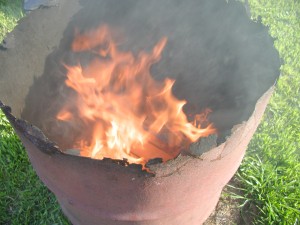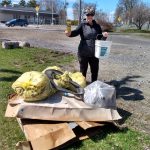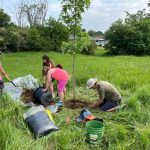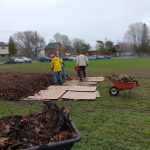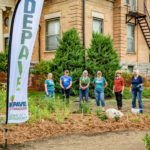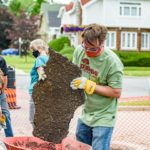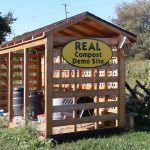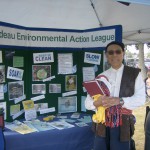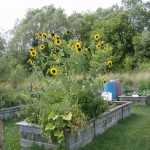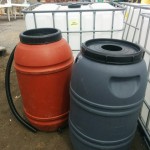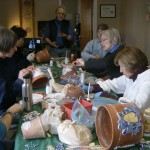Stop the Burn
Many rural residents may think that burning their own garbage is a good thing because it helps keep garbage out of the landfill. Or, they may think it’s okay if they just burn paper and food scraps, and leave the plastics out.
But, new research shows that the burning by rural residents of ALL types of garbage is the fourth largest source of dioxins and furans in Ontario. (Hospital incineration and industrial processes lead the way.)
Whether garbage is burned in woodstoves, burn barrels, outdoor furnaces or open pits, it releases toxic pollutants into the air. These include dioxins and furans, and also arsenic, styrenes, PCBs, lead and mercury.
These pollutants are produced when oxygen is combined with the chlorine (that exists in most products) in a low-temperature burn.
The Health Consequences
Dioxins are linked to many serious health concerns including increased risk of cancer, developmental problems in children, diabetes, cardiovascular disease, harm to the immune system, endometriosis and hormonal disruption.
The health risks do not come so much from breathing the air containing the pollutants as they do from eating food. Poisons released into the air by garbage burning eventually fall back to earth and contaminate plants, soil and water. Animals consume them and they make their way up the food chain. Dioxins accumulate in the fat of animals and fish and are passed on to people when we consume their flesh or milk. It is this long-term, gradual exposure in the fat of the human body that is the problem.
What Should I Do?
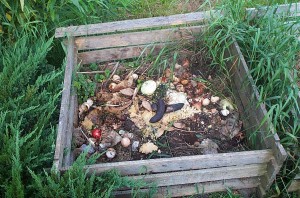 It comes down to this: Burning any garbage produces pollutants. Burning plastics is particularly bad, but even burning regular paper and newspaper, which contain chlorine, produces dioxins. Even burning food wastes. And, burning simply destroys and wastes good resources. Paper fibres can be turned into paper again, plastic into plastic, organic matter into valuable fertilizer. There are no reasons to burn garbage — and many good reasons not to burn.
It comes down to this: Burning any garbage produces pollutants. Burning plastics is particularly bad, but even burning regular paper and newspaper, which contain chlorine, produces dioxins. Even burning food wastes. And, burning simply destroys and wastes good resources. Paper fibres can be turned into paper again, plastic into plastic, organic matter into valuable fertilizer. There are no reasons to burn garbage — and many good reasons not to burn.
Garbage burning is a practice we can change. Choose items with less packaging. Compost organic waste such as food scraps, leaves and grass. (Yes, you can compost in winter.) Make use of whatever system your municipality has developed including garbage and Blue Box pick-up, the landfill, recycling depots, and Household Hazardous Waste events and depots.
Rural Residents
Part of the problem in rural areas is that many rural people don’t have easy, convenient access to good disposal and recycling options. Environment Canada found that about 24% of rural respondents burned garbage and 40% reported it was a common practice in their neighbourhoods. Farmers, for example, don’t have any options for farm plastic. Municipalities won’t take it in their programs and there is no distinct farm waste program.
But, there is also a new provincial program in the works to pay for half the cost of a municipality’s recycling program. Ask your councillor or reeve what they plan to do to improve garbage and recycling options.
What REAL Has Done
In 2001, LL Green accepted an invitation from the Environmental and Conservation Advisory Committee of Elizabethtown-Kitley to co-host a public forum on the issue of rural backyard garbage burning. In the fall of 2003, REAL and LL Green signed a contract with Environment Canada to do some public education around the issue throughout Lanark, Leeds and Grenville Counties. The campaign was launched during Waste Reduction Week 2003 and the message was taken to the public, fire departments, the health unit, farmers and municipalities. Similar projects are underway in a number of US states, including New York, and in the Thunder Bay area. Clearly there is more public education to be done, as some local municipalities are encouraging their residents to burn their garbage.
Resources
US Environmental Protection Agency

